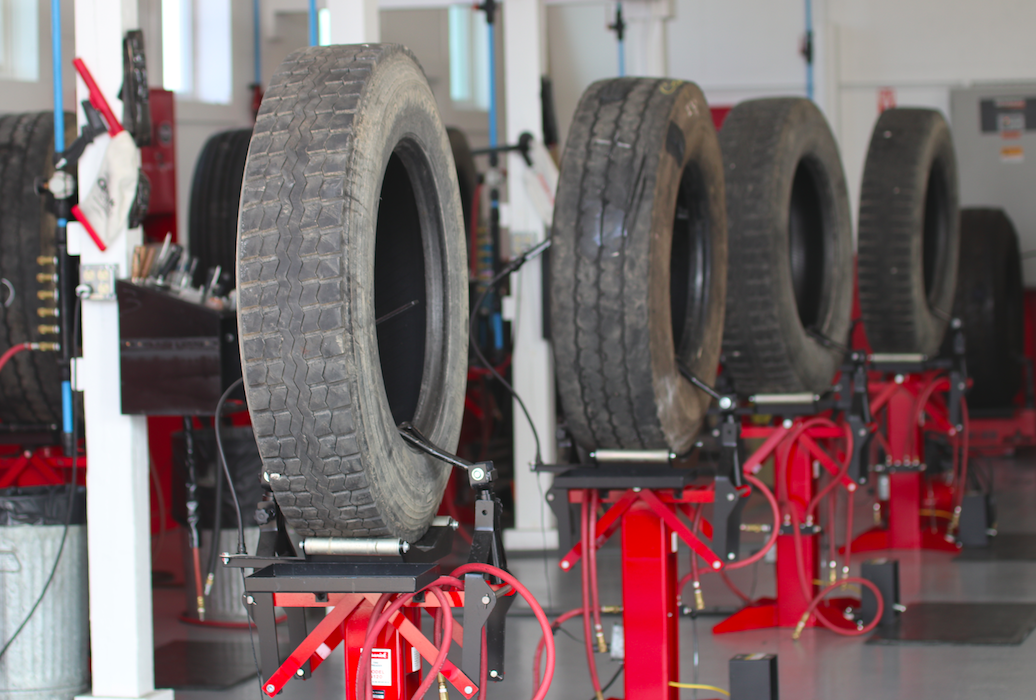The Ultimate Tire Repair List for Safety And Security and Financial Savings
Maintaining ideal tire conditions is an essential facet of ensuring safety on the roadway and maximizing cost-efficiency in the lengthy run. From tire stress to walk depth, each part plays a critical function in the overall efficiency of your automobile. Nevertheless, there are key variables and checkpoints that usually go unnoticed but can dramatically affect the lifespan and capability of your tires. By adhering to a thorough tire repair work list, you can proactively deal with these locations and potentially stay clear of unexpected concerns. Let's discover the vital actions that can secure both your safety and security and your cost savings - morris tire.
Significance of Tire Maintenance
Routine tire upkeep is vital for making certain vehicle safety and prolonging the life expectancy of your tires. By appropriately keeping your tires, you not just improve the general efficiency of your car however likewise decrease the danger of mishaps triggered by tire-related problems. Tire pressure should be frequently inspected and adapted to the producer's specifications to guarantee optimal fuel performance and grip on the roadway. Furthermore, turning your tires at recommended intervals advertises also walk wear, resulting in a longer life-span for your tires and far better handling of your automobile. Keeping an eye on the walk depth is additionally necessary, as worn-out treads can cause lowered traction, especially in damp or icy conditions.
In addition, routine tire inspections can aid identify possible problems such as punctures, cuts, or protrudes, which if left unattended, might result in tire failing. morris tire. Correct alignment and harmonizing contribute to a smoother experience, improved gas performance, and avoidance of uneven tire wear. Finally, prioritizing tire maintenance not just guarantees your safety and security on the road yet also conserves you money by expanding the life of your tires and avoiding expensive fixings or replacements
Monitoring Tire Stress
Guaranteeing the correct inflation of your tires is an essential facet of vehicle maintenance that straight influences safety and efficiency. Proper tire pressure not only improves handling and stopping yet also contributes to sustain performance. To check tire click for source pressure, use a tire stress scale to measure the air pressure in each tire, including the spare. Describe the lorry manufacturer's recommended PSI (pounds per square inch) degrees, normally located on a sticker label inside the driver's door, in the owner's handbook, or online. It is a good idea to examine tire stress when the tires are cool, as driving warms the tires and increases pressure readings. Remember to evaluate pressure levels on a regular basis, a minimum of as soon as a month, and soon journeys. Overinflated or underinflated tires can bring about irregular step wear, lowered grip, and prospective blowouts. By preserving appropriate tire pressure, you not only ensure your safety but also extend the life-span of your tires and maximize gas economic situation.
Inspecting Footstep Depth
To ensure optimum security and performance of your vehicle, a crucial facet of tire maintenance involves reviewing the walk depth consistently. The walk on your tires plays an important duty in preserving traction when traveling, particularly in damp or slippery problems - morris tire. Not enough walk deepness can result in decreased hold, longer braking distances, and an increased danger of hydroplaning
The majority of new tires have a walk deepness of around 10/32 to 11/32 of an inch. The minimum legal walk deepness limit is 2/32 of an inch in many states, however for boosted safety, it is suggested to change tires prior to they reach this limit.

Consistently examining your walk deepness and changing tires when necessary will not just boost your safety when traveling however original site additionally add to cost savings by improving fuel effectiveness and expanding the life-span of your tires.
Identifying Tire Damage
Examining your tires for indications of damage is vital for keeping roadway safety and security and preventing potential hazards. Consistently inspecting for tire damages can assist you attend to problems early and prevent a lot more substantial and pricey repair services down the line. When evaluating your tires, keep an eye out for cuts, leaks, bulges, fractures, and any other abnormalities on the step or sidewall. These can suggest prospective powerlessness that may lead to a blowout or loss of control while driving.

Extending Tire Life Expectancy
To expand the life expectancy of your tires, start by ensuring they are effectively pumped up according to the producer's recommendations. In addition, turn your tires on a regular basis to promote also walk wear. Frequently inspect your tires for indicators of damages, punctures, or irregular wear, and deal with any concerns quickly to prevent more damage.

Conclusion
Finally, routine tire maintenance is critical for making sure security and conserving money in the future. By examining tire pressure, evaluating walk deepness, determining tire damage, and prolonging tire lifespan, motorists can avoid crashes and expensive repairs. Prioritizing tire upkeep is an easy yet reliable method to remain safe when traveling and avoid unneeded expenses.